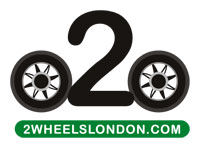Every year over 6,000 young riders (16-24) of powered bikes are injured in the UK. Tragically, more than 60 of them will die, with another 1,200 left facing a life-changing injury, including paralysis and loss of a limb.
That's why it's important we do all we can to have the skills and knowledge needed to ride safely, both for ourselves and for other road users.
That's why we need to get trained...
Everyone who rides a moped, scooter or low-powered motorbike (less than 125cc) must hold a CBT certificate, unless they also have a full driving licence.
CBT stands for compulsory basic training. It's a one-day course that covers the basics of bike safety, maintenance, handling, skills and road sense. It's not a test as such, more a compulsory day's tuition, but if the instructor isn't happy with a rider’s ability or understanding of any one part, they may ask them to attend a second day.
The good news is, the day's pretty good fun. CBT courses are usually fairly informal affairs and they are packed with great advice, tips and information from really experienced riders. Participants learn a lot - and come away a much better, safer rider.
CBT in hand and anyone can ride for two years on L-plates.
If you want to know more about CBT, check out this link; it's the official GOV.UK approved place to go.
Top tips for your CBT
- Get a good night's sleep and be prepared for a long day. It's tiring – but in a good way!
- Make sure you take water and food: there will be breaks in the day to recharge your batteries and keep you focused
- If you wear glasses/contacts make sure you take them with you. If it’s a sunny day, don’t forget your shades!
- Make sure you know what protection kit the instructor is providing before the day. Some will provide helmets, jackets, and gloves for riders to wear – but not all. All participants must wear riding-appropriate gear: this means at least heavy denim jeans, and not skirts or shorts. On your feet, strong, sturdy boots with thick soles: not trainers or thin shoes. Despite what you might think, steel toe capped shoes or boots are a bad idea, too.
Find your nearest CBT course at
https://www.gov.uk/find-motorcycle-training
Preparation is key...
Before signing up for CBT, check out the DVSA's Ridefree programme. We talked about it in our last blog, but if you missed it, see www.safedrivingforlife.info/ridefree
Prepare for the course by picking up a copy of 'Learning to Ride'. This book talks about the process of learning to ride, and the key riding skills you'll need to demonstrate to pass your CBT test.
Finally, get to know the Highway Code. Pick up a copy in all good book shops, or see www.gov.uk/guidance/the-highway-code
The Highway Code has sections on motorcycling as well as general knowledge on road signs and the rules of the road.
